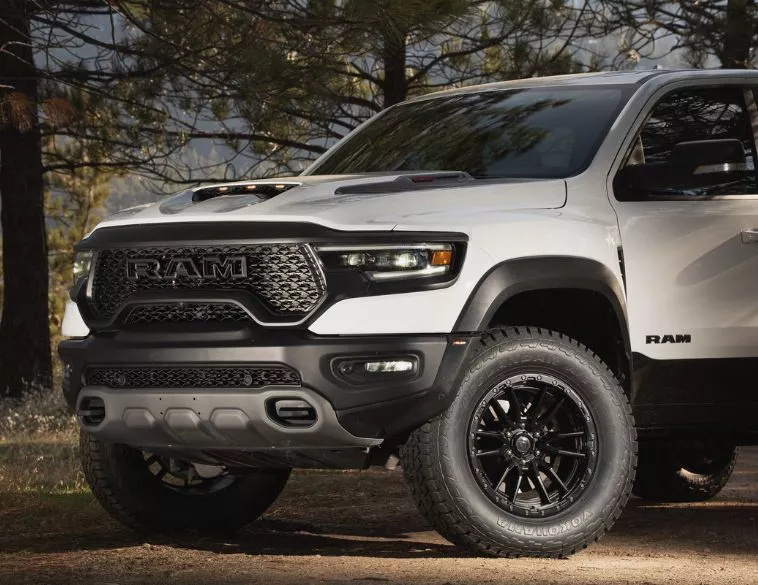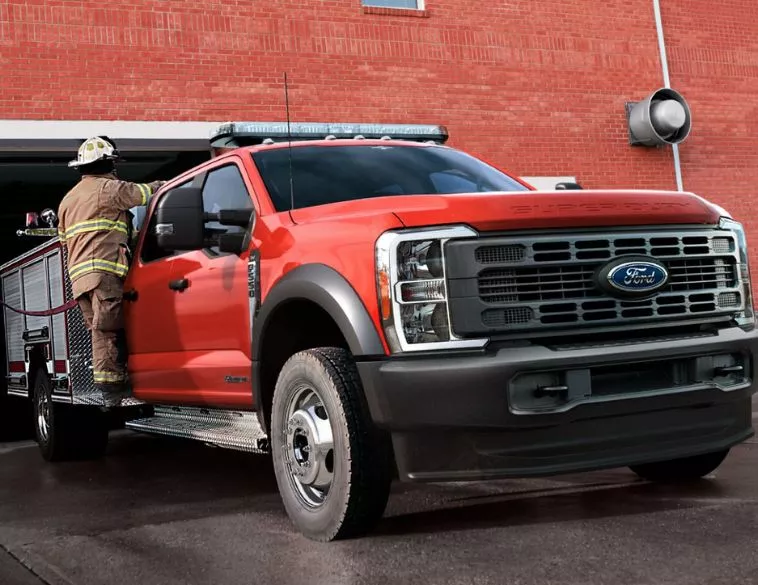Spec’ing for Snow
Here in Canada, right-sizing your snowplow fleet is key to success.

In most parts of Canada, winter comes in one size only—extra-large. So if you’re responsible for a snowplow fleet or a snow-removal fleet, you’ve got your work cut out for you. Our extra-large winters require extra-careful effort when spec’ing a medium-duty truck for your plowing needs.
Upgrading to medium-duty
Many fleet managers begin the snow removal spec’ing journey with a simply question: Do we really need a fleet of medium-duty trucks, or can we get by with something less costly?
“It really depends on a number of factors including the type of plow and equipment, size and shape of the lots you need to plow, the route, etc.,” says Joe Birren, Regional Engineer Manager, Holman. “Right from the start you need to establish a clear mission objective for your trucks.”
Are you plowing mostly residential, commercial, industrial, or a combination of properties? Furthermore, how big or small are these properties, and what shape are the lots?
“Even some commercial or industrial properties may be hard to do with a medium-duty truck, or even a one-ton pickup with dual rear wheels,” Birren explains. “The alleyways might be too narrow, or the parking lot configuration may be too tight.”
On the other hand, if you’re working on a huge property, like the parking lot of a mall or a big box store, then the benefits of a medium-duty truck with a wider plow are clear.
One-season vs. all-season truck
While you’re considering the type and size of the properties and lots you need to plow, another key consideration when spec’ing your trucks is whether you plan to use your trucks for the winter season alone, and let them sit idle the rest of the year, or whether your trucks will tackle other jobs when the weather warms up.
“What are you going to be doing with that truck when the summer comes?” Birren asks. “Will you be putting a dump or stakebed body on it for landscaping, etc? Will you be towing with it? Or will that truck sit unused, waiting for the next winter season?”
Plow size and weight matters
The size of the plow you intend to use also needs to be kept in mind. According to Birren, depending on specs and the route, a typical three-quarter-ton truck can handle a maximum eight-foot regular straight-blade plow. “If you go any larger than that, the front end of these trucks can’t handle the weight and abuse of a longer plow,” he says. “A steel or stainless steel plow can typically weigh up to a thousand pounds or more. If you mount that on the front of a ¾ ton truck, you may require a ride-levelling kit.”
Another option might be to use a composite plow, which can weigh less than a thousand-pound traditional metal plow. However, Birren doesn’t recommend it, depending on the application. “If you’re using a a poly plow in a rough commercial application, and you catch the corner of a building, large rocks, or curbs with it, they’re not as forgiving and can crack,” he says.
One factor that many fleet operators forget to consider is to check the width of the desired truck versus the width of the plow at full angle, and the turning radius of the truck. “When you’re looking at a straight-blade application, the blade may appear to be just fine when it’s parallel with the front of the truck,” Birren explains, “but once the plow is at full angle, now it’s only plowing part of the road ahead of you because it’s not wide enough for the track of the truck, and that leaves you in an uneven situation where two of your wheels are travelling on a cleared, plowed road and the other two through deeper snow.”
Bigger, not always better
If your fleet tackles the really big jobs, like plowing highways after a storm, then perhaps the answer is a Class 6-8 truck with plows that have expandable wings on the side. However, Birren cautions that unless you really need a larger truck for these extreme applications, bigger isn’t always better.
“For example, some Class 5 trucks can take advantage of 8.5-11-ft. expandable plows and have the increased towing capacity benefits for use in the off-season,” he adds.
The bigger you go, the more you have to spend on the initial acquisition cost of the truck as well as on maintenance, fuel, and repairs, he says. “And depending on the application, don’t always assume that you need a diesel engine. You can shave about 900 lbs. off the front of the truck and save over $12k if you go with gas instead of diesel, and that’s key when you’re hanging a 1,000+ lbs. plow on the front. What kind of suspension and front and rear axle capacities are you going to require? Also consider adding ballasts, when needed, for proper weight distribution and traction.”
Birren notes that the diesel vs. gas debate has gone on for years, and it’s likely not coming to an end anytime soon. “A lot of people have this mindset that if they’re plowing, then they must have a diesel engine,” he says. “But that’s no longer the case today with some of the more powerful and reliable gas engines on the market. Again, it depends on the application requirements.”
Electrical needs, etc.
Beyond the actual plow itself, you’re also going to have to consider the increased electrical demands of the vehicle to help with the options that typically include dual alternators, auxiliary batteries, additional exterior lighting, strobes, beacons, radios, and other electronic devices.
Four-wheel drive is highly recommended, Birren says, as are locking differentials. He warns against buying trucks off a dealer’s lot without carefully understanding the specs, and highly recommends factory ordering to spec the truck direct from the manufacturer instead.
“The truck on the dealer lot may not have a snowplow package, or it may have a standard front suspension and front axle capacity,” he says. “If you hang a thousand pound snowplow on that vehicle, you could be in trouble.”
Finally, if you’re also operating a salt or sand spreader a the back of your truck, you’ll want to ensure the truck is rated for the extra weight, that your rear axle and suspension can handle the additional capacity, and that you have the wiring necessary to power the electric motor that spreads the salt or sand, and any additional lighting, etc. In short, there’s a lot to consider.





